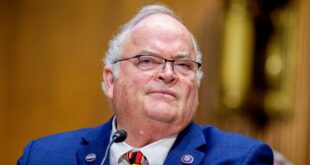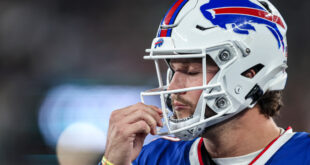

Tesla CEO Elon Musk has been promising self-driving cars for a decade, and the moment of truth may finally be here.
Musk, who’s mostly back in the private sector after his chain saw-wielding turn in the Trump administration, has said that Tesla plans to launch a robotaxi service in Austin, Texas, on Sunday. Though he said the exact day could still shift, Tesla appears to be getting close to making an attempt, with videos spreading online of road tests where no human is in the driver’s seat.
But Tesla is also starting from behind. Waymo, a spinoff of Google, is already running a robotaxi service in several cities including Austin, and the service has a growing following.
Safety remains a key question. Musk has rejected the idea of using radar and lidar sensors on Tesla vehicles, instead relying on cameras in a departure from some rivals. He has said the Tesla robotaxis are using a “new version of software” that’s relatively untested.
Federal regulators have been raising concerns about Tesla’s driver-assistance software for more than a year, saying it contributed to hundreds of avoidable crashes, including some fatal crashes.
Waymo’s service has not reported any fatalities.
Here’s what to expect from Tesla’s planned service.
When will it start?
Musk said this month that the robotaxi launch would be, “Tentatively, June 22.”
Musk has predicted for years that autonomous Tesla vehicles were just around the corner, to the point where it’s become a meme. Musk told Fortune magazine in 2015 that autonomy was two years away, and he said in 2019 that Tesla would have 1 million robotaxis on the roads in 2020.
Texas Democrats on Wednesday asked Tesla to delay its launch until September, when a new state law could take effect and require robotaxi operators to obtain a state permit. Tesla did not respond to requests for comment.
Who will be able to use this service?
Very few people, at least to start. Musk has said that the service will begin very small, with as few as 10 vehicles the first week. They’ll operate in Austin, but Tesla hasn’t said how large its service area will be. There is no public waitlist, although Musk has said he wants to grow the service within a few months to catch up to Waymo.
On Friday, some people on Musk’s social media app X posted screenshots of what appeared to be invitations to “early access of Tesla Robotaxi.”
Robotaxi services work like a Lyft or Uber ride-hail service: A user orders a ride on a phone app by entering their starting point and destination. The key difference is that there’s no one in the driver’s seat, although it’s not clear whether Tesla will have someone in the front passenger seat, as it has during test drives, or how much remote control of the car Tesla will have.
How does this compare with Waymo?
Waymo says its service covers 37 square miles in Austin, and customers there can order rides through the Uber app, in a partnership between the two tech companies. Waymo is also available in Los Angeles, Phoenix, San Francisco and Atlanta, with plans to expand to Miami and elsewhere.
Nationwide, Waymo says it has 1,500 vehicles on the road, plus parking lots, electric charging stations, maintenance staff and engineers to support the vehicles.
“Waymo is far and away the leader of the development of the technology here, and over the last 15 years has been evolving both the technology and related infrastructure to support what they’re doing,” said Bryan Reimer, a research scientist at the Massachusetts Institute of Technology’s Center for Transportation and Logistics.
Tesla is calling its service Robotaxi, but so far the company has not succeeded in getting a trademark for the term.
How safe will Tesla robotaxis be?
Experts say that no one knows how safe Tesla’s service will be.
“I’m glad they’re starting small,” said Greg Stevens, the research director of Mcity, a testing lab for autonomous technology at the University of Michigan.
“As an engineer, I’m a real fan of small launches. Keep it simple in the beginning: launch a small number of vehicles and watch them very, very closely,” he said.
Phil Koopman, an associate professor of engineering at Carnegie Mellon University, said that only a driving record over tens of millions of miles will determine Tesla’s safety.
“Success is no crashes and no serious mishaps for the rest of the year, at least,” he said. “Safety is not something where you can go look at the car and see that it’s safe.”
Tesla has a different approach to safety than its chief competitor. While Waymo uses a combination of cameras, radar and lidar to keep its bearings, Tesla relies on cameras only. It’s an approach that Musk says is less expensive and “superior” to using lidar, while federal regulators have said that Tesla’s cameras may have trouble seeing in certain conditions such as fog and glaring sun.
Musk has said that Tesla is “being super paranoid about safety.” He has also said a more advanced version of Tesla’s autonomy software “still requires a lot of polishing.”
Can Tesla just do this? Who has approved it?
Texas has had relatively permissive laws about autonomous vehicles: Unlike in California, there’s no state regulator in Texas that needs to sign off on the service. That may change in September, when a proposed Texas law requiring robotaxi operators to get authorization from the Department of Motor Vehicles is set to take effect. The bill has passed the state House and Senate and is awaiting action by Republican Gov. Greg Abbott.
If Tesla launches Sunday and Abbott signs the bill into law, it’s not clear what would happen under the new law this fall. A spokesperson for the Texas Department of Motor Vehicles said Friday that the department would need time to put the law into effect and begin enforcement, a process that would most likely stretch into next year.
Austin city officials also say they’re prohibited under state law from regulating autonomous vehicles, but they have been documenting examples of safety concerns. In the first five months of this year, the city said it collected data on 35 safety incidents, such as blocking traffic, involving various companies.
Austin officials said that as of Friday, they had not documented any safety incidents involving Tesla autonomous vehicles.
“The City treats each AV company that expresses interest in Austin the same, offering training opportunities and providing information about City right-of-way and procedure,” Jack Flagler, a spokesperson for the Austin transportation department, said in an email. He said the city had provided Tesla and others with maps, special event information and information about fire and police procedures.
Tesla has sought to block the city of Austin from releasing government records about its planned service, according to Reuters.
What happens if something goes wrong?
Tesla has not publicly outlined any contingency plans, but if rival companies are a guide, Tesla will have staff ready to assist either in person or remotely. Test vehicles spotted in Austin have been followed close behind by what some people speculate to be “trailing” vehicles driven by humans.
Companies such as Waymo and the now-defunct Cruise say they can and do intervene remotely with vehicles if there’s a problem — which for Cruise meant every 4 to 5 miles, according to CNBC. Cruise later shut down following a highly publicized crash involving a pedestrian.
Tesla posted a job related to teleoperations and told Wall Street analysts to expect telesupport, according to Wired magazine and auto site Electrek, but the company hasn’t provided details.
The stakes are high for the whole robotaxi industry.
“That’s my big worry: that all the progress we’ve made gets halted by some sort of major safety incident,” Stevens said.
How quickly could Tesla come to other cities?
Musk has said that safety and regulations will guide how quickly Tesla tries to expand the number of vehicles in the service. He told CNBC in an interview last month: “I think we’ll probably be at a thousand within a few months.” He also mentioned expanding to California, though Tesla does not have the permit required to operate there.
Musk has also hyped a new vehicle, called Cybercab, that Tesla could potentially use for its robotaxi service, though for now the company is using existing model vehicles. And eventually, Musk has said that individual Tesla owners would be able to offer their vehicles for hire in the robotaxi service, but he has not set a date for when that might happen.
“How long did it take Waymo to scale up? Years and years and years. And there’s no reason to believe it will be different for Tesla,” Koopman said.
What will the impact on Tesla as a company be?
The scheduled launch of the robotaxi service has helped to buoy Tesla’s stock price in recent months, after the company’s sales and profits cratered during Musk’s time in the Trump administration and the resulting “Tesla Takedown” protests against him and the company. Some investors think Tesla will be able to scale up its service quickly to dozens of cities over the next year, creating a new source of revenue while possibly also boosting vehicle sales.
Some experts think that is the main point of the robotaxi launch.
“I think the objective that is paramount is stabilizing Tesla’s stock price,” said MIT’s Reimer. “This is as much of a media stunt as anything else.”
 Latest World Breaking News Online News Portal
Latest World Breaking News Online News Portal






